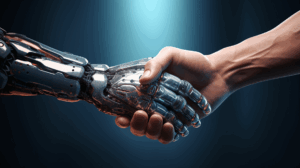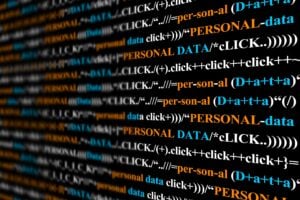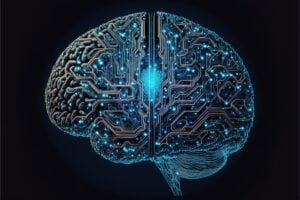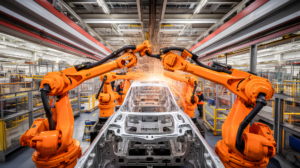Download the Future of Insights Report
The advancements in artificial intelligence have brought with it newfound challenges and opportunities in the insights field. The discipline is exploring new tools and technologies, such as synthetic data, developing best practices when using AI and creating industry use cases. At the same time, there is a counterpoint developing, to continue to focus insights on human-centricity, with human insights and understanding the voice of the consumer primary concerns.
A Critical Juncture
Most of the insights executives interviewed for our report agree that, perhaps inevitably, AI will be sure to make a significant impact in the field. Machine learning already is impactful in many ways and the future is already fast approaching.
Yet it’s the combination of humans and AI that could ultimately bring insights to a game-changing new level. It may also provide new positions, skills, and responsibilities to the insights professional. The fear of replacement the community feels, while understandable, may ultimately be replaced by optimism and the advantages AI can provide.
Many still feel it’s a long road ahead before AI can advance to that next level of true insights.
“AI will take us a long way. But I think we strayed from human-centricity for a split second just because AI is so impactful. But it takes a human to interpret this and to recognize key insights. It’s still going to come down to AI and humans working together, but it is still going to take the human touch,” says Karen Kraft, Associate Director, Consumer Insights & Analytics, Johnsonville.
One must certainly strive to keep humans at the center of it all, and that includes the role that both the human insights professional plays as well as the voice and understanding of the core consumer.
“AI is going to have an impact on the insights field, but what we must do is understand how we can leverage AI to improve and push our function forward. It’s not about a replacement of insights,” says Elizabeth Oates, Author, More Than Just Interesting: How to Build an Insights Function for Impact.
Oates adds, “It’s a ‘yes and’ because it will enable us to collect information and insights in new ways. It could allow us to distill data in new ways. But what it can’t do and what we must hold ourselves to is really understanding the human behind the consumer insights. That’s going to be the job of the insights professional to leverage AI as a tool, but to really continue to understand the human behind the data.”
Activating Intelligence
Some insights leaders point out that AI as a tool can still wield significant influence. Ultimately, this may be another avenue to gain that “seat at the table,” to become that authoritative voice of the consumer for their organization. Leveraging AI, in this way, becomes another key piece of the insights puzzle, one that can efficiently automate some tasks so that the insights executive can focus on more and deeper actionable insights, storytelling and strategic directions.
“When I think about insights professionals moving forward and what GenAI can do for our function, it will allow us to have more scope, more responsibility, and the expectations to activate intelligence across our organizations,” says Justin Coates, Head of Global Market Research & Consumer Insights, Eastman.
Coates observes, “In today’s world, we’re hunting and gathering insights. That’s all simplified now. It’s democratized. Everyone can use these tools to get information, but where humans come in and where our functions come in is distilling intelligence from multiple sources, finding meaning and opportunity. What’s more important is the ability to activate your organization, to take that intelligence and drive new growth and opportunity.”
It is that activation that may take a more human approach to understand and supervise.
“Artificial intelligence is a tremendous and powerful way to bring efficiency to the data mining and evaluation process. But a key point is that it will leave more room for creativity and the human touch, which is necessary when you must interpret the insights. We bring that to the table as insights professionals,” says Idil Cakim, Senior Vice President, Research and Insights, Audacy.
Cakim notes, “Insights will remain a critical function of corporate and brand development. What we need to be careful about is not to sacrifice quality for speed. There will be tremendous pressure to deliver faster and with the snap of a finger.”
Finding A Balance
To be sure, there are many opportunities and drawbacks to leveraging a new tool such as AI, but it’s important to also realize that it’s a balancing act. It is up to the human insights professional to help weigh those advantages while overseeing the process, whether it be AI, synthetic data or other simulated environments used to measure consumer behavior.
“With any new technology, there are learnings and challenges. Starting with the source, data quality and context is paramount. As these tools expand how information is collected and insights are generated, there is a risk of misrepresentation without context or simply using incorrect or fake data. The biggest challenge I see with the velocity and efficiency gains, is how contextually accurate the insights are and the authenticity of data,” notes Anu Sundaram, Vice President, Business Analytics, Rue Gilt Groupe.
There will be disruptions in using new technology. But there will also be potential to develop new practical applications and use cases that can showcase the effectiveness of these tools.
“AI can identify trends much faster and incorporate those trends into our work. But how do you take those needs and develop them into a product that still requires human innovation? AI can speed up that ideation process and arrive at those needs faster than traditional methods,” notes Aarti Bhaskaran, Global Head, Research & Insights, Snap Inc.
She continues, “For example, at Snap, we built a creative prediction tool using AI in partnership with Kantar, where we were able to upload over 11,000 ads. Kantar used AI to break it down into various elements to predict whether an ad will lead to brand lift results. Now without AI, this would have taken months and months of coding and analysis. It would have been a yearlong project. But because you had AI which was able to ingest so many ads and analyze them at scale, we built this database in a matter of months. That’s what an efficient process looks like because of technology.”
Embracing AI
The nature of insights work is changing, and with it there will be an evolution in terms of skills and capabilities, teams, and strategies, both for the insights professional and the other stakeholders of an organization—who no doubt will also be grappling with the changes and challenges of AI with their job functions.
There is no doubt, agree our insights thought leaders, that if one doesn’t embrace the change, one will be left behind. It will also take insights professionals one step forward in their journey to becoming key consultants to their businesses. Gaining that competitive edge will become paramount.
“As AI adoption grows, a divide could become evident between those who use it effectively, those who don’t and those who avoid it,” says Kajoli Tankha, Senior Director, Consumer Marketing Insights, Microsoft. “The first group could not only increase productivity but also enjoy a better work-life balance. AI could take away drudgery, allowing researchers to focus on high-value, strategic work. However, it’s crucial that organizations incorporate AI into their strategic vision and place ethics and privacy at the forefront. AI must be a responsible tool for success, not just a quick fix.”
What will the future hold? Predictive simulated environments? Digital twins? Quantum computing? The Metaverse? Whether you call yourself an insight specialty professional of some kind, a data science analyst, an insights translator, a change agent, a human-centricity expert—change is part of the job for the foreseeable future.
“I just don’t see it being the age of the generalist,” says Deborah Campbell, VP, Customer Marketplace Insights (CMI), Verizon. “What I believe will happen is that we’ll still need researchers, but more are going to have to specialize in some of these very specific studies. Some things haven’t changed, of course. Just knowing facts has never been enough. Sometimes I hear that the researcher of today is going to have to be even more of a consultant. Does that mean we weren’t supposed to be before?”
Ultimately, it is an integration of both elements, the human and the AI, that will bring with it a newfound collective intelligence between humans and machines. This can provide a new level of insights versatility, multi-source analysis and strategic perspective to the insights provided by those overseeing AI.
But it still seems to be a transformational moment of sorts as the traditional ways of working begin to blur into new skills and roles.
Yogesh Chavda, Director, Center for Marketing Solutions, University of South Carolina, observes, “The future role of artificial intelligence in the insights field will be transformational. The entire way we do market research will evolve and shift. This requires new methodologies to be built out. It requires new skill sets, and it’s going to require a new mindset on how to do market research. It’s breaking down boundaries and the way we work.”
Yet, it’s also important to have a process in place to combine new tech and new talent in new ways, notes Oksana Sobol, Vice President Insights, The Clorox Company. It is the synergy of human skill, data-rich environments and technology-driven efficiency that together enable not just an incremental improvement but breakthrough business ideas.
Sobol adds, “When it comes to data driven, human centered, AI-enabled insights, the future is now. It has arrived and will keep advancing as we stand just at the beginning of uncovering new capabilities and ways of delivering impact.”
The Future of Insights Report is available now to view or download by visiting the insights community, AllThingsInsights.com.
Download the Future of Insights Report
Video courtesy of QuestionPro
Contributor
-

Matthew Kramer is the Digital Editor for All Things Insights & All Things Innovation. He has over 20 years of experience working in publishing and media companies, on a variety of business-to-business publications, websites and trade shows.
View all posts












































































































































